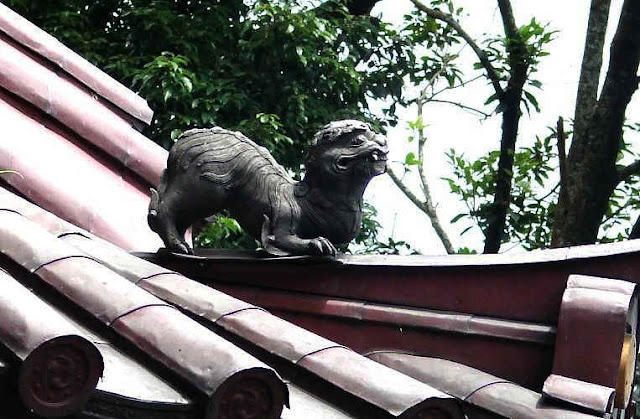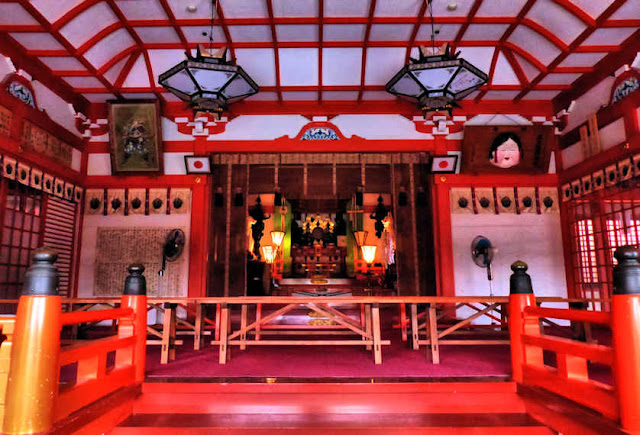Takuhi Shrine is possibly the most famous of all the shrines on the Oki Islands, considering that during the Edo Period both Hakusai and Hiroshige, two of the most pre-eminent artist of the times, did prints of the shrine and its founding legend.
Situated high on 452 meter high Mount Takuhi which is the central peak of the submerged caldera that has formed the Dozen group of islands, the shrine has expansive views over the surrounding seas and islands.
Getting there involves a hike up a mountain trail which passes several smaller shrines on the way.
Known as the "Burning Lights" shrine, the legend is that three fireballs arose from the sea and flew into the cave where the shrine now stands.
Another story has it that when Emperor Gotoba was on his way here to exile his ship was lost and a light from the shrine saved him.
The origin stories most likely relate to the practice of signal fires and temple and shrine lanterns being used by sailors to navigate at night. Takuhi Shrine became well known as a shrine offering protection on sea journeys.
The honden of the shrine is built into a small cave and is said to be the oldest building on the Oki Islnds.
It was built in 1732, prefabricated in Osaka and then shipped here and carried up the mountain to be reassembled.
It, along with the main hall are registered Important Cultural Properties.
The ornate carvings only appear on the front and one side of the structure, with the two unseen sides remaining plain.
By the 14th century it had become a Shugendo site and Unjoji Temple was set up with a Jizo as honzon.
The combined site became known as Takuhi Gongen until the early Meiji Period when most traces of Buddhism were removed.
The kami enshrined here is now listed as Ohirumenomuch, more commonly known as Amaterasu the Sun Goddess. Originally the mountain itself was considered the kami. For most of its history the primary deity was a Jizo.
There are numerous smaller shrines dotted around mountainside.
On one visit I was accompanied by the head priest whose family were originally Buddhist priests serving the complex.
The former priests house not far from the shrine is now used as the shrine office. It is a fine example of a traditional large house .
While chatting with the priest he showed me this painting of a Tengu. According to our chat he said that the highest shrine on the mountain was a Sanjin Shrine dedicated to Tengu. However, upon some research it turns out that the sanjin concept was created by Hirata Atsutane in the 19th century.... He also showed me a print of Izuna Daigongen which at the time I described as
Tengu Dakiniten Fudo Myoo.





































































